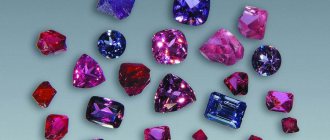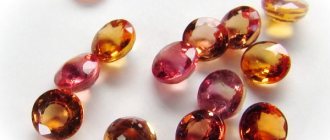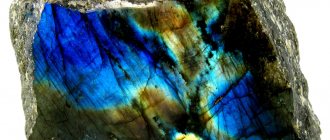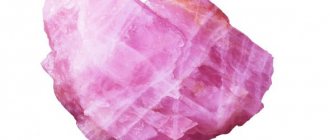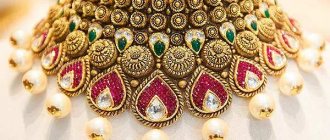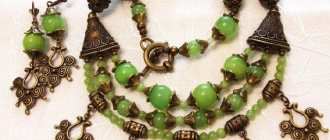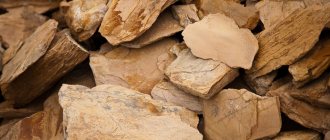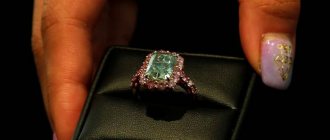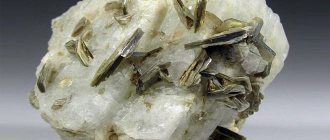Sapphire is a first tier gemstone. In terms of strength and beauty, it is inferior to few of its brothers. It is not surprising that such expensive beauty is sought to be counterfeited. A specialist can distinguish natural from artificial sapphire. But following simple rules will help you insure yourself against counterfeiting. Everyone will feel like a jeweler when experimenting with stones.
What does a gem look like?
The most popular crystals are in the classic blue range, from rich blue to violet.
- Natural stones are colorless, yellow, green, brown-orange. There are no red sapphires in this variety, these are rubies.
- The highest quality is moderate blue, the ideal color is cornflower blue.
- The velvety cornflower blue hue helps to distinguish real Kashmir stone.
- Burmese and Sri Lankan gems are famous for their “silk”. These are needle fibers intersecting at an angle of 60°. Visible under a magnifying glass.
The crystal is dichroic, that is, it splits the sun's rays. This creates a play of light and a bright glass shine.
Sapphires of other colors
Yellow sapphires are even rarer than blue sapphires, and therefore their value is only slightly lower than cornflower blue sapphires. The color of yellow crystals varies from deep amber to almost transparent, colorless. Clear crystals are often confused with diamonds. Yellow corundums, according to Eastern religions, can be worn on the body only if the stones have no defects.
Black corundums are quite common, but their value is noticeably lower. Jewelry with dark crystals turns out to be too strict and not so pleasing to the eye.
Pink corundum is native to Madagascar and Sri Lanka. These crystals have a delicate shade of pink and are in high demand. They are very similar to pink diamonds, but are cheaper.
Green corundums are often not green in the full sense of the word: the color of the stone is obtained by the superposition of yellow and blue impurities.
Called lotus or padparadscha, the crystals have an unusual yellow-orange hue with red highlights. Jewelers classify them as a separate, fairly large group of corundums.
“Analogs” of sapphire offered on the market
There are several imitations of the precious stone:
- outright fakes;
- doublets;
- artificially grown specimens;
- less expensive natural gems.
There are general identification methods and separate ones for each group.
Fakes
Ordinary bottle glass is passed off as a precious stone. It is not difficult to recognize it - the bubbles inside, unlike synthetic or natural minerals, heat up immediately in your hands.
Doublets
There are a lot of composite stones on the jewelry market, made up of several layers - doublets, triplets. The top of the product is a real sapphire, the bottom is glass, an artificial crystal or a cheap gem. The gluing is detected by examining the product under a magnifying glass.
They actively counterfeit jewelry in frames that hide the problematic part of the crystal.
Artificial stones
The official way to obtain gems. A popular method is the Verneuil technology. Source materials – natural corundum chips, chromium, titanium, iron. Vanadium, nickel, magnesium or cobalt oxide is added for pigmentation. Crystals are obtained by firing under pressure. Used in medicine, engineering, technology. Sapphire crystal is found in airplanes, rockets, and branded watches.
The grown artificial sapphire copies the characteristics of the original, in some cases it surpasses it, so it is difficult to recognize. The main marker is the much lower price.
Other natural gems
Natural cheap stones are passed off as sapphire:
- kyanite;
- tanzanite;
- tourmaline;
- spinel.
To recognize a stone, a refractometer is used - a device that determines the degree of refraction of light. The result is checked to the second decimal place. It has a refractive index of 1.76–1.77, while spinel has a refractive index of 1.72. A deviation of 0.01 indicates a different stone.
In addition, tanzanite is identified by its reddish background. Blue spinel specimens, distinguished by their dark shade, are passed off only as low-grade sapphire. Kyanite has a banded color structure. Only a jeweler can distinguish sapphire from tourmaline using a special composition.
Description of artificial sapphire
Synthetic sapphire is obtained artificially.
This sapphire has an even color and bright shine. There are no chips, cracks, natural inclusions or other defects that natural gems have. In mineralogy, sapphires are stones that are exclusively blue in color. Sapphire corundums can be either transparent or colored in different colors, mainly blue and dark blue.
Nanosapphire is not afraid of temperature effects, ultraviolet rays, and lends itself well to cutting. When selling jewelry with such a stone, it must be marked “g/t” or “synthetic,” indicating the artificial origin of the stone. If the mark is missing, the seller is breaking the law by selling artificial stones under the guise of natural minerals.
Varieties and colors
Synthetically produced stone is colorless. It is called leucosapphire. The high strength, heat resistance, and transparency of the mineral allow it to be used in industry in the production of microcircuits, LEDs, and screens in mobile devices.
In jewelry, colored varieties of corundum are more often used. The most common sapphires are blue and light blue, because... they more faithfully imitate the original.
Other shades are also available:
- pink;
- orange;
- yellow;
- green;
- violet;
- black.
In jewelry, there are various shades of sapphires.
Scientists have learned to grow synthetic star sapphire. This stone creates an unusual optical effect.
When illuminated, a light spot with rays diverging in different directions can be seen on the surface of the gem.
Mechanical impact
A natural gem has sharp corners and smooth edges. In terms of hardness and strength, it is inferior to the strongest crystal – diamond. Only the same sapphire or diamond can damage it. But it easily scratches a hard surface, like glass.
You can check a sapphire by drawing a groove. Nothing will happen to the natural one; a mark will remain on the fake.
But this is not an absolute indicator. Tourmaline also scratches glass.
It is better to recognize a gem in this way in an inconspicuous area.
Foreign matter analysis
Natural conditions and the thousands of years during which crystals form differ from those in the laboratory. Therefore, you can determine the authenticity of a crystal visually:
- A high-quality stone must have inclusions and a heterogeneous structure. Visible under a magnifying glass or in bright daylight.
- The inclusions, visible to the naked eye, are characteristic of natural low-grade specimens.
- This one does not contain gas bubbles like glass. But this is not a 100% method, because the authors of the fakes have studied similar things.
- To determine the origin, the sample is placed in a jar of monobromonaphthalene. The container is placed on white paper and a light source is placed on the side. With this lighting, inclusion-strips are visible. In natural stone they are straight, in fake ones they are curved.
Specimens with the asterism effect, that is, inclusion in the form of a six-rayed “star,” are valued. It is easy to distinguish such a sapphire from a fake. With a smooth rotation of a natural gem, the star moves, but the imitation one remains in the center. They cannot fake the effect yet.
Color
A good way to check authenticity. The color of a natural crystal does not change under different lighting conditions. Therefore, the sample is evaluated outside during the day, then under the light of a light bulb. A difference of several tones indicates a fake.
If the certificate indicates that the stone has undergone heat treatment, it is checked under ultraviolet light. Synthetic ones will have a greenish tint, while natural ones have white highlights.
How to distinguish synthetic stones from natural ones
- If the stone is clean and its price is reasonable, then most likely it is synthetic.
- The glass has rounded edges. Natural crystal is too hard for this type of cutting and has sharp edges.
- Glass scratches easily, whereas it is very difficult to leave a mark on real glass.
- The presence of defects, blotches, and inclusions indicates the natural origin of the crystal.
- Air bubbles in a perfect stone indicate that it was grown in a laboratory.
- Sapphire heats up slightly in the hand and tends to change color under ultraviolet radiation.
In fact, the average person will only be able to spot obvious jewelry. And in most cases, you will have to contact a jeweler to evaluate a natural sapphire. In the workshop, stones are studied using a refractometer - a device that measures the angle of refraction of rays. Based on this indicator, as well as on appearance, color, and cleanliness, the jeweler will issue his conclusion.
We must not forget that natural sapphires are also subject to alteration. For example, a silver chain with natural sapphire is brought to a jeweler. And after studying, he finds out that the stone is natural, but with defects. And the cracks on it are covered with synthetic filler. In the same way, on star sapphires with weakly expressed asterism, this effect is artificially enhanced. In any case, only a specialist can determine the true cost of a crystal.
Formal methods
Since none of the methods available to the average consumer to verify the authenticity of a sapphire is reliable, specialists are involved in the process. The certificate or passport is studied independently.
Verification of documents
In order not to pay a lot of money for synthetics, purchases are made in salons with an impeccable reputation, where they will provide a certificate for each expensive stone.
The seller is obliged to provide information about additional processing of the stone. It is known that most crystals are refined. The crystal is heated or irradiated with x-rays to make the color richer and the background more uniform. Natural specimens pass the test, artificial specimens become striped.
A reliable sign is the price. A first-line natural gemstone does not come cheap.
Invitation of an expert
To avoid any doubts, a jeweler or gemologist who is not interested in the final result is involved in the purchase. He will make a preliminary conclusion in the store. He will be able to definitively distinguish a fake by using a professional tool. You will have to pay for the service, but this is a small thing compared to the cost of natural stone. And personal peace of mind is more valuable.
Properties of artificial sapphire
Artificially grown corundum is similar in appearance to real stone and has an identical crystal structure. It has high strength and high shine. The degree of transparency of stones can vary: from transparent colorless (leucosapphire) to opaque black.
Physico-chemical
The main structural element of synthetic corundum is aluminum oxide. The relative surface hardness value is 9 points on the ten-point Mohs scale. Density - 3.93 g/cm³. Melting point is above 2000 ºC. The mineral reacts chemically with acids and dissolves in them.
Aluminum oxide is the main structural element of sapphire.
Medicinal
Like many gems, sapphire has medicinal properties and is used in alternative medicine. It affects both the physical and spiritual state of a person.
It is believed that the mineral helps with diseases of the musculoskeletal system and diseases of the circulatory system. Wearing amulets with this stone improves vision and hearing, and helps get rid of skin pathologies. Constant contact with sapphire improves mood, reduces symptoms of apathy and depression, and relieves insomnia.
Magical
Blue corundum is a symbol of fidelity, chastity and modesty. It helps its owner find love and improve relationships with a marriage partner. Sapphire is a protector from negative otherworldly phenomena: the evil eye, damage, love spells. It also protects from the influence of envious people, gossips and slanderers. The gem gives determination and courage to an insecure person.
The mineral is believed to have powerful positive energy. It helps to develop the best human qualities: kindness, responsiveness, compassion. It gives inspiration to creative people and stimulates them to search for non-standard approaches to implementing projects.
Blue corundum will protect against the evil eye and damage.
Blue sapphire is the main symbol of the 45th wedding anniversary.
On this day, spouses exchange wedding rings with inserts made of this mineral.
